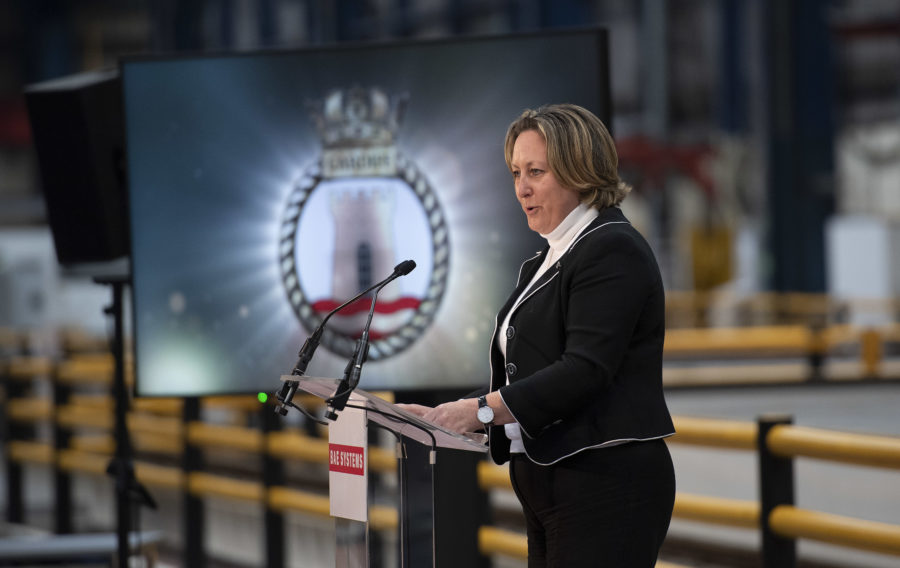
Defence Minister Anne-Marie Trevelyan attended a ceremony at BAE Systems shipyard in Govan marking the first steel cut for the HMS Cardiff.
The first steel was cut at a ceremony at the BAE Systems shipyard on the Clyde marking the start of construction of HMS Cardiff. The ship is one of the navy’s Type-26 antisubmarine frigates and is one of eight City Class ships.
Each Type 26 will be equipped with a range of capabilities including the Sea-Ceptor missile defence system, an embarked helicopter, medium range radar, powerful bow and towed array sonars, helicopter-launched torpedoes and a design which makes them extremely difficult for enemy submarines to detect. They will be designed for joint and multinational operations across the full spectrum of warfare, including complex combat operations, counter piracy, humanitarian aid and disaster relief work.
Anne–Marie Trevelyan, Defence Minister, said: “The Royal Navy’s new world beating Type 26 anti-submarine frigates are truly a UK-wide enterprise, supporting thousands of jobs here in Scotland and across the UK. These ships will clearly contribute to UK and allied security, but also make a strong economic contribution to the country.”
“With 64 sub-contracts already placed with UK-based businesses, there will be new export opportunities for them to tender for through the selection of the Type 26 design by Australia and Canada too.”
The ships will replace the current Type-23 frigates and protect sea deterrent and Queen Elizabeth aircraft carriers. The design will allow systems to be regularly updated throughout its lifespan and will include virtual reality and 3D technology.
The first three Type-26 ships will be the HMS Cardiff, HMS Belfast, and the HMS Glasgow, costing £3.7billion. The second batch will see the construction of the HMS Edinburgh, Sheffield, Birmingham, Newcastle, and London.
image © Crown Copyright
If you would like to join our community and read more articles like this then please click here.
anti submarine BAE Systems construction Queen Elizabeth aircraft carriers Royal Navy ship building Type 26 Frigates








